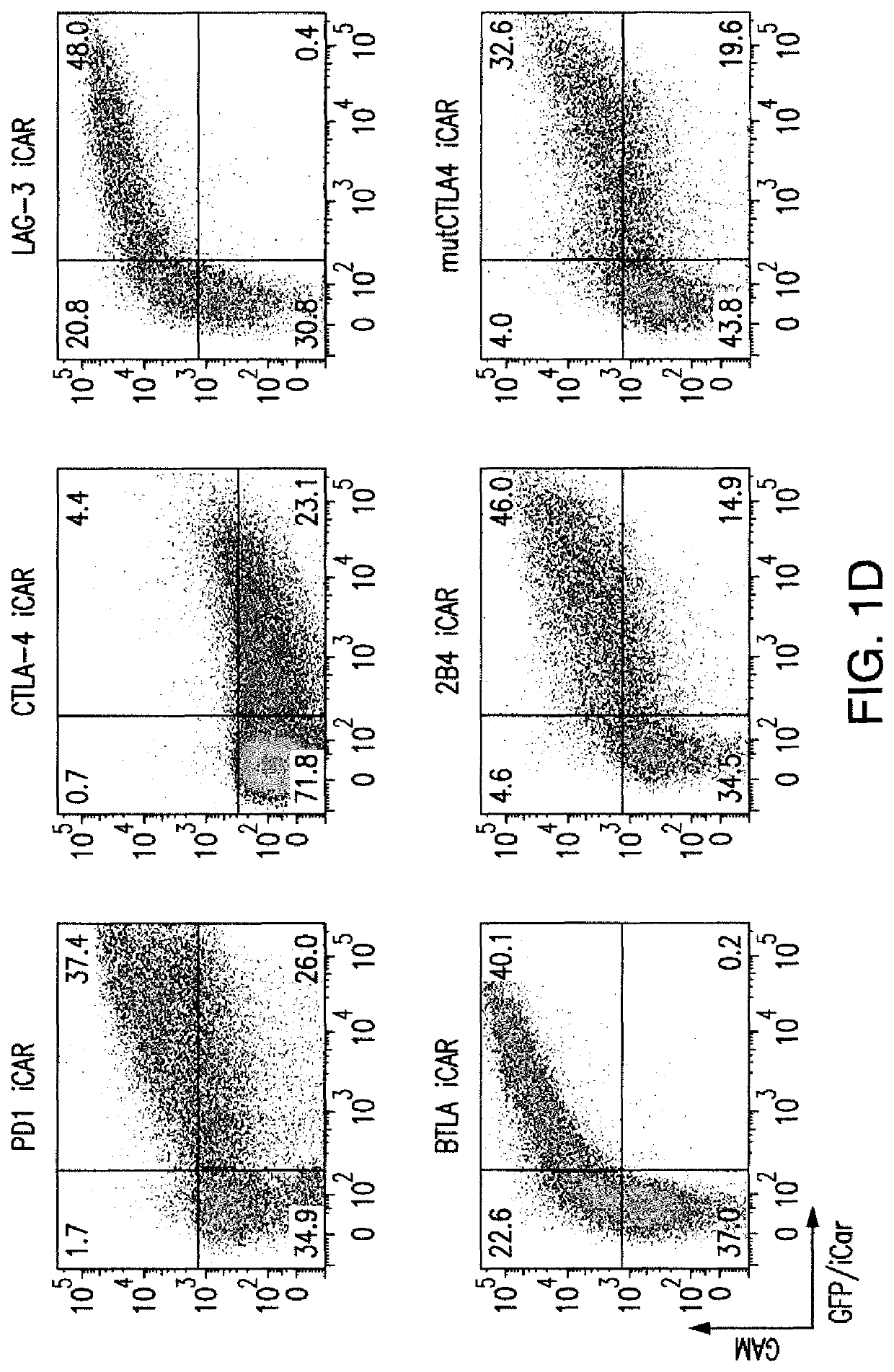Compositions and methods for immunotherapy
a technology of immunotherapy and compositions, applied in the field of immunotherapy, can solve the problems of limiting the use of an otherwise efficacious cellular treatment, reducing the immune activity of the immunoresponsive cell, and reducing the cost of abrogating the therapeutic benefit, so as to reduce the immune activity, reduce the off-target effect of the immunoresponsive cell, and reduce the immune activity
- Summary
- Abstract
- Description
- Claims
- Application Information
AI Technical Summary
Benefits of technology
Problems solved by technology
Method used
Image
Examples
example 1
Inhibitory Chimeric Antigen Receptor (iCAR) Divert Off-Target Responses
Summary
[0204]T cell therapies have demonstrated long-term efficacy and curative potential for the treatment of some cancers. However, their use is limited by damage to bystander tissues, as seen in graft-versus-host disease after donor lymphocyte infusion, or “on-target, off-tumor” toxicities incurred in some engineered T cell therapies. Non-specific immunosuppression and irreversible T cell elimination are currently the only means to control such deleterious responses, but at the cost of abrogating therapeutic benefits or causing secondary complications. On the basis of the physiological paradigm of immune inhibitory receptors, antigen-specific inhibitory chimeric antigen receptors (iCARs) were designed to preemptively constrain T cell responses. The results as presented below demonstrate that CTLA-4- or PD-1-based iCARs can selectively limit cytokine secretion, cytotoxicity, and proliferation induced through th...
PUM
| Property | Measurement | Unit |
|---|---|---|
| temperatures | aaaaa | aaaaa |
| temperatures | aaaaa | aaaaa |
| temperatures | aaaaa | aaaaa |
Abstract
Description
Claims
Application Information
 Login to View More
Login to View More - R&D
- Intellectual Property
- Life Sciences
- Materials
- Tech Scout
- Unparalleled Data Quality
- Higher Quality Content
- 60% Fewer Hallucinations
Browse by: Latest US Patents, China's latest patents, Technical Efficacy Thesaurus, Application Domain, Technology Topic, Popular Technical Reports.
© 2025 PatSnap. All rights reserved.Legal|Privacy policy|Modern Slavery Act Transparency Statement|Sitemap|About US| Contact US: help@patsnap.com



